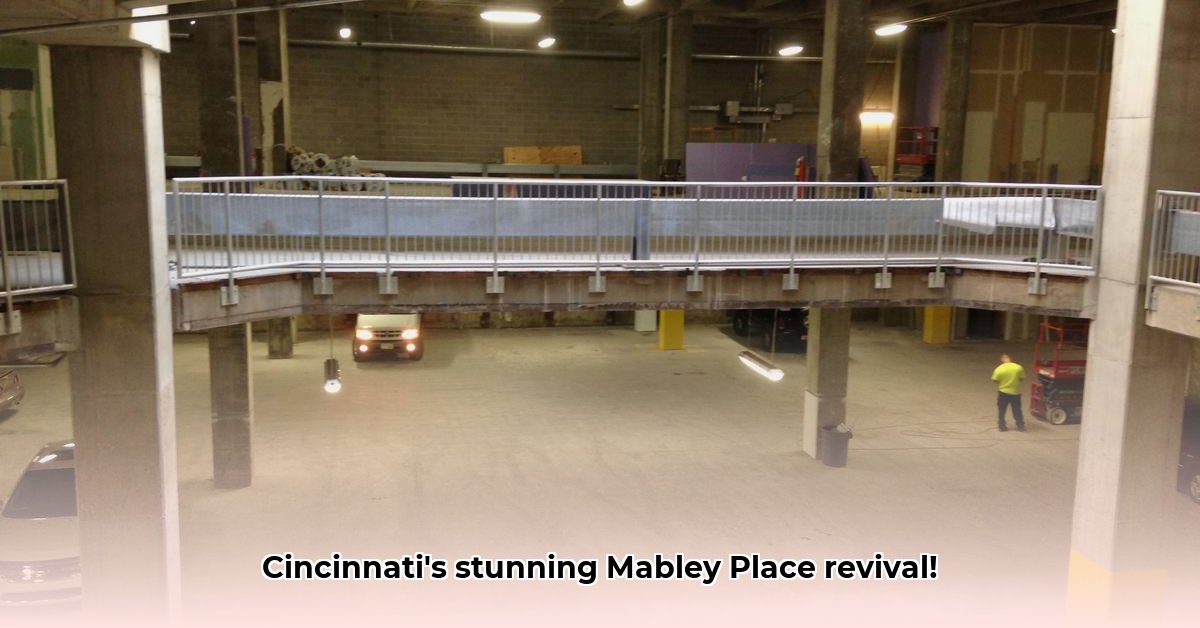
Downtown Cincinnati faced a critical parking shortage, impacting both residents and businesses. The solution? A bold redevelopment project: transforming the derelict Tower Place Mall into Mabley Place, a mixed-use facility combining a substantial parking garage with retail space. This revitalization effort represents more than just added parking; it's a crucial part of a larger urban renewal strategy for the city center. But how successful will it truly be? For comparison, see the Fountain Square project.
The Transformation of Tower Place Mall
The abandoned Tower Place Mall presented a unique opportunity. Acquired by the city for a nominal fee of $1, the site became the foundation for a public-private partnership. Kingsley Wells, a development firm, invested a further $5 million in the project. The result? A modern parking facility offering around 800 parking spaces, complemented by approximately 8,500 square feet of retail space designed to reinvigorate Race Street. This innovative approach is a prime example of strategic urban planning. But what were the key drivers for this project? How did it progress?
The initial impetus was clear: a significant parking deficit in the city center. The high cost and scarcity of parking were hindering downtown economic activity and negatively impacting the quality of life for residents and workers. The redevelopment's success hinges on its ability to alleviate this problem – but it also aims to significantly improve the aesthetic appeal of a previously neglected area. How effective will the retail component be in attracting visitors and local residents? Will the carefully chosen name, a tribute to the city’s beloved Mabley & Carew department store, resonate with the community?
More Than Parking: A Retail Strategy and Community Engagement
The inclusion of retail space wasn't a mere afterthought, but a key element in the revitalization plan. The strategy hinges on the idea that increased parking will directly translate to increased foot traffic for the new shops and restaurants. Retail expert Kathleen Norris, although unnamed in the original article, expressed confidence in the potential of the location, suggesting this could transform the street into a vibrant hub. However, the viability of this retail strategy isn’t without its challenges. The retail sector is notoriously volatile, and the success of the shops will depend on various factors beyond the project itself. Will the location attract sufficient customers to support a thriving retail environment? Is the retail mix curated in response to consumer preferences?
A Broader Context: Downtown Cincinnati's Urban Renaissance
Mabley Place isn't an isolated project; it forms part of a wider downtown revitalization effort. The nearby Pogue's garage is undergoing a similar transformation into a mixed-use building. While the removal of the connecting skywalk initially caused some disruption, it's viewed as a necessary step toward creating a more pedestrian-friendly environment. This decision reflects a commitment to modern urban design principles, but some concerns remain regarding potential impacts on traffic flow and accessibility. Furthermore, does the integration of the Mabley Place project with the Pogue's garage redevelopment generate economic synergies?
Assessing Success: Stakeholders and Risk Mitigation
The success of Mabley Place is contingent upon the collaborative efforts of various stakeholders, each with their own short-term and long-term goals and potential challenges. A comprehensive risk assessment matrix is crucial for strategic decision-making across the life cycle of this ambitious undertaking.
Stakeholder Analysis:
Success will be gauged not only by the developers' financial return, but also by the impact on the community. Increased tax revenue for the city, improvements to the quality of life for residents and workers, increased foot traffic, and a more vibrant downtown environment are key indicators of the project's overall success. Do the developers’ expectations align with the city's long-term goals? What are the mechanisms implemented to ensure successful integration of the various stakeholder interests?
Risk Mitigation:
The project acknowledges several potential risks, including construction delays, low retail occupancy rates, economic downturns, and unforeseen infrastructure problems. Mitigation strategies, including meticulous planning, competitive lease terms, strong marketing initiatives, and robust contingency plans, have been put in place to address these challenges. However, the effectiveness of these strategies remains to be seen.
The Future of Mabley Place: A Work in Progress
The long-term success of Mabley Place remains uncertain. While the initial investment demonstrates a considerable commitment from the city and private investment, the project's viability will be determined over time. Regular monitoring of key metrics, such as parking utilization, retail occupancy rates, and economic impact, will be critical in assessing its success and making necessary adjustments as needed. The project's ultimate impact on downtown Cincinnati will depend on a multitude of factors, and the next few years will be crucial in determining its lasting legacy.